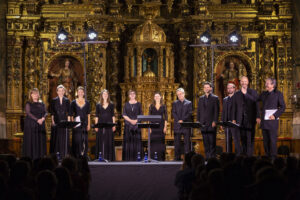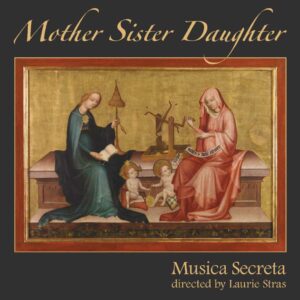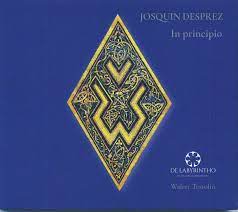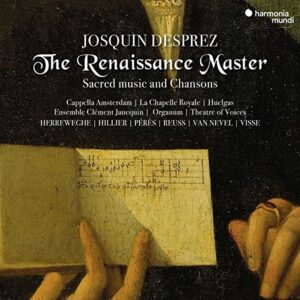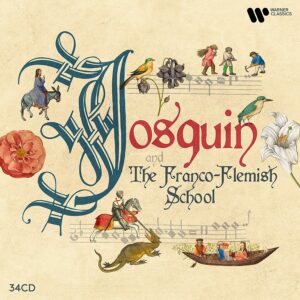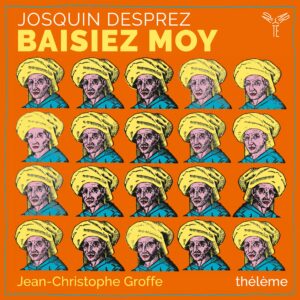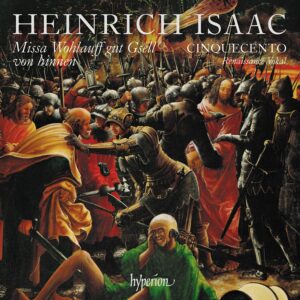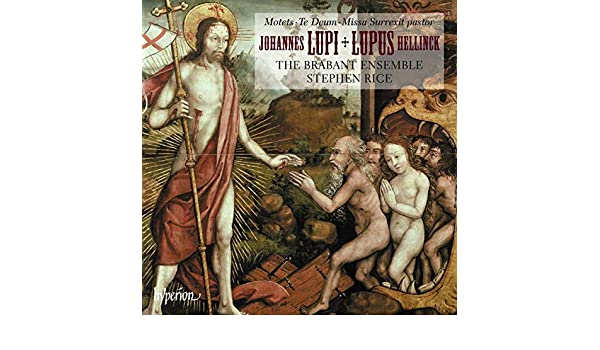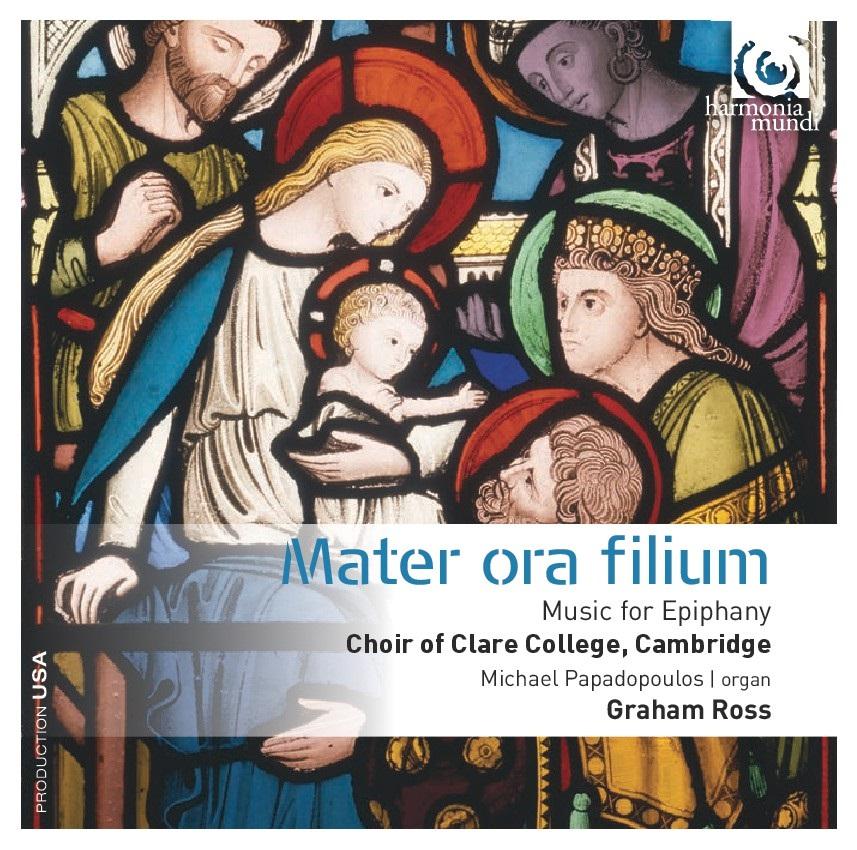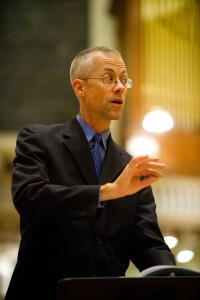Photo: Rodrigo Pérez
Tallis Scholars, Peter Phillips, director
Church of St. Mary the Virgin
December 9, 2023
NEW YORK – It is the fiftieth anniversary of the renaissance ensemble the Tallis Scholars, directed during that entire time by Peter Phillips. Their annual December visit to St. Mary the Virgin Church in midtown often consists of a predominantly Marian program, both to suit that setting and church calendar. This year, there were two large pieces devoted to Mary – settings of Salve Regina by Jacob Obrecht (1457-1505) and Peter Philips (1560-1628; the early baroque composer, not the eponymous conductor of the Tallis Scholars). The bulk of the music was instead devoted to a different theme, “While Shepherds Watched,” with its centerpiece being Missa Pastoris quidnam vidistis by Jacobus Clemens Non Papa (c. 1510-1556; “not the pope” – Pope Clement – was thought to be an affectionate nickname). This parody mass, based on the motet Pastoris quidnam vidistis by Clemens, was recorded in 1987 by the Tallis Scholars. Its reappearance at the concert at St. Mary’s was a welcome return.
The concert began with Clemens’s motet, a dramatic setting depicting the visitation of angels to a group of shepherds, announcing the birth of the messiah and urging them to go and find him. The composer comes from the post-Josquin generation, the mid-period of the renaissance in which elaborate counterpoint often took precedence over clarity of text, but with considerable expressiveness achieved by musical atmosphere.
The mass incorporates a number of aspects of the motet, its opening figure treated in a number of passages, sometimes the entire tune, and at others, its rising head motto. The Kyrie bustles with activity, free counterpoint encircled by imitation. The Gloria has a canon in the lower voices and an elaborated melody in the high soprano. As it is often performed, the final section, “qui tollis,” speeds up. Here, because of the prevalence of syncopation, the effect was thrilling. The jubilation of the shepherds at the motet’s close is mirrored in the exuberance of the Sanctus’ “Alleluia.” An extra bass part was added to the Agnus Dei, reinforcing the sonority of the close of the mass.
Three motets on the “While Shepherds Watched” theme ensued. One of the greatest Christmas motets from the renaissance in Iberia is the six-voice Quem vidistis, pastores by Tomás de Luis Victoria (1548-1611). The sopranos begin in canon, accompanied by a free part in the alto, suggesting, as compared with the text Clemens set, an early appearance of the angels. The three lower parts respond in an analogous configuration. The two trios then break out of mirrored deployments, speeding up in a nimble section that ends with a major cadence. The second part of the motet continues the mirroring effect, with the lower voices starting a new canon first, followed by the upper trio. After a spirited Alleluia section, the choir settled into a final set of phrases taking the text, “go and tell them,” finally arriving at another major cadence.
Two settings of Quaeramus cum pastoribus followed. It is a text in which an angel exhorts the shepherds to find the Messiah, followed by a refrain of Noés (noëls). Portuguese composer Pedro de Cristo (1545-1618) created a four-voice setting consisting of tightly spaced canons with the refrain moving to a sprightly triple meter. The Tallis Scholars reveled in its joyousness, but I can also imagine this motet being a good introduction to Renaissance Christmas music for an ambitious American church choir. Italian composer Giovanni de Croce (1557-1609), on the other hand, sets the text in the Venetian style, with two quartets and much antiphony. The contrasting settings of the same text were a canny programming choice, and the singers thrived in this deployment.
Obrecht’s Salve Regina alternates chant and polyphony. It was performed with eloquent solemnity, providing a marked shift of demeanor. The Salve Regina by Philips, on the other hand, is a vibrant affair. Composed nearly a century after the Obrecht, it focuses on antiphonal polyphony rather than chant. Philips was a Catholic exile from England, and his Salve Regina setting has much in common with the Venetian polychoral style.
After sustained applause, the Tallis Scholars performed a brief but pleasing encore, Salva Nos by French composer Jean Mouton (1459-1522). The piece gave the group’s lower voices considerable attention, its final chord richly sepulchral. Fifty years into their tenure, the Tallis Scholars and Phillips remain an energetic and authoritative presence.
-Christian Carey
